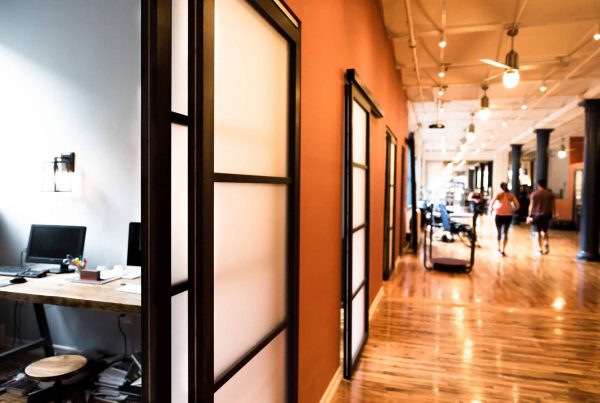Field testing Raydoor Sound Performance

We recently undertook an effort to field-test sound transmission on a selection of our room dividing systems with an independent (3rd party) engineering firm. Field testing is especially important for us (and our clients) as the built environment tends to highlight any shortcomings more critically versus what you might find in laboratory testing. It also means the numbers reflected in the testing results provide a realistic expectation for those considering a room divider as a solution for their space.
Our findings from recent sound tests indicate an ASTC rating of 12- 15 for some of our more common large room dividers. To give that some background and context, ASTC is an acronym for “apparent sound transmission class” and measures how well a partition reduces sound, whether it be from exterior to interior (i.e. windows) or from one interior space to the next (like a wall or door). From the field conditions, our consultants were able to estimate an equivalent lab-setting rating for STC from 17-20 depending on system and configuration. With the right configurations and/or added sound attenuation items like gaskets, the numbers achieved can be even higher, meaning greater sound attenuation.
A 1 STC in sound reduction is roughly equivalent to approximately 1 decibel less – a 3 decibel drop is where change becomes a perceptible difference to the human ear. Sound reduction does not work equally for all frequencies, but the ones we are most concerned with are human speech (given that Raydoor is an interior product).

What does it mean for expectations of performance in a project?
It boils down to specifying the right product for the right situation. With our product range we are ideally suited to separate spaces with similar functions on both sides of the system. Office from office, living room from den, servery from dining area are all good examples of where a Raydoor system might work best. It is important to keep in mind that Raydoor systems are very much aesthetic visual dividers – for situations that require the utmost in sound privacy they might not be ideal. That being said, discussing your needs with one of our design consultants can help us tailor solutions that serve a broad variety of needs beautifully.

Project Flexibility
Continuing the theme of customization, our inserts offer varying levels of visual privacy from completely transparent to opaque, with numerous levels in between and translucent or not as the space requires. We can also use more decorative inserts from the likes of Lumicor or 3-Form and can even accommodate custom artwork applied as film. Go really wild and make a different statement on each panel to create a kaleidoscopic effect as doors slide past one another or as they stack.
While there are certain standards and requirements as with any product, it has been Raydoor’s goal to provide designers and users with a tailored product that enhances a space and a design, even becoming a design feature if that’s preferred. Just as easily, Raydoor systems can be customized to blend seamlessly with their surroundings, sliding silently while providing added functionality without standing out. Let us help you achieve the goals of your project with the flexibility to make Raydoors your own in more ways than one.






